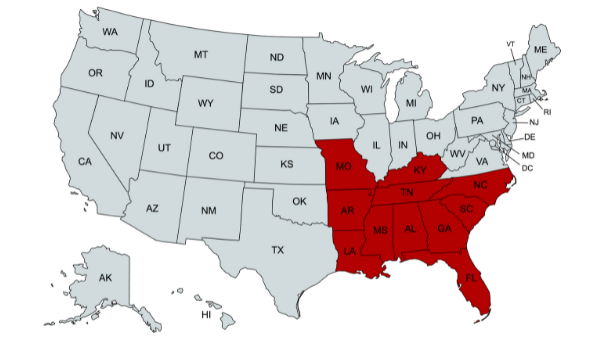Should I be concerned?
My 13-year-old daughter recently started wearing long-sleeved shirts, even in warm weather. I have heard about the practice of cutting, and I understand that many young people are trying it. Could my daughter be doing this? Does this mean she is suicidal? How can I talk to her about my concerns?
It is a ritual practiced in secret, hidden by long sleeves or bandages, brushed off as an accident if someone notices. Kids hear others talk about it at school and some give it a try. Sometimes accidents happen and worried parents wonder what drove their child to harm their bodies in such a way.
Self-injury, also known as self-harm or self-mutilation, is not a new behavior even in Christian life. In 1 Kings 18:28 the prophets of Baal slashed themselves with swords and spears. Mark 5:5 relates the story of a demon-possessed man who cut himself with stones. Religious history includes numerous accounts of the faithful who would whip themselves to suffer as Jesus did.
In modern culture, teens and tweens have become more aware of the practice of self-injury through movies, television shows, music and the Internet. Consequently the typical onset of self-harming acts is at puberty, according to the website of Mental Health America, a national mental health advocacy group.
Just how many individuals practice self-harm is unknown because the behavior is usually hidden and often misunderstood. For example, the Centers for Disease Control and Prevention (CDC) keeps track of self-harm injuries by age group as part of its national suicide statistics, though experts agree that self-injury practices are not suicide attempts.
Often not a suicide attempt
“Many people tend to minimize self-injurious behaviors due to their growing numbers,” according to information published online by S.A.F.E. Alternatives, a treatment program and resource for self-injurers and health-care providers. “While very few people actually die from self-injury, and it is most often not an attempt at suicide, the two behaviors are correlated.”
Though many cases go unreported and untreated, Mental Health America estimates that about 2 million people in the United States (roughly 1 percent of the population) injure themselves in some way.
Just as the statistics are hard to pin down, so too are the specific behaviors associated with self-injury. Though the most common forms of self-harm are cutting and burning, other kinds of injuries can be self-inflicted as well including hitting, bruising, hair-pulling, interfering with wound healing and drinking something harmful, such as bleach or detergent.
Regardless of the type of harm counselors reiterate that self-harm behaviors are rarely suicidal behaviors. Instead individuals are seeking a way to cope with the intense emotional distress they are feeling, said Anne Lawton, a licensed professional counselor with Pathways Professional Counseling, a ministry of the Alabama Baptist Children’s Homes & Family Ministries.
“Self-harm is certainly an unhealthy coping strategy, as many people who harm themselves report that physical pain is a way to numb the emotional pain in their life,” Lawton said.
Peer influence
Peer influence often plays a strong role in self-harm behaviors as Beth Davis, a parent in the Mobile area learned when her 13-year-old daughter, Sarah, became withdrawn and defiant. Sarah repeatedly found excuses not to go to school, but it was only after an incident that led to a hospitalization that Beth discovered the reasons for Sarah’s behavior. Beth learned that not only had Sarah been researching cutting and other ways to self-injure, but many of her friends had been cutting as well.
“It was something that bound them together, and it became contagious,” Beth said. “When their feelings were hurt or they were angry, their first thoughts became, ‘I’m going to hurt myself,’ and then they talked about it with the others.”
In Sarah’s case, the doctors ruled out depression and saw her actions as primarily influenced by her friends. Sarah is now in counseling, but Beth admitted it has been a difficult journey.
“This experience has changed our lives. I’m trying to get over it, but I’m angry, angry that she would do this to us,” Beth said.
Anger is a common reaction to the revelation of self-injurious behaviors, Lawton said.
However, in order to help with healing caregivers must look at the bigger picture.
“As a friend or family member of a self-mutilator, it is crucial to look past the action to the shame, hurt and pain causing it,” Lawton said. “Then as you and your teen utilize and understand the importance of healthy coping strategies, he or she will be less inclined to fall to the pressure of practicing self-harm.”
EDITOR’S NOTE — The mom and daughter’s names have been changed.
________________________________________________________
Resources
“Cutting: Understanding and Overcoming Self-Mutilation” by Steven Levenkron
S.A.F.E. Alternatives® (Self-Abuse Finally Ends) (www.selfinjury.com)
The Lysamena Project on Self-Injury (www.self-injury.org)
Focus on the Family Parenting Resources: Parenting Challenges
(www.focusonthefamily.com/parenting/parenting_challenges/cutting_and_selfinjury.aspx)
“When Your Child is Cutting: A Parent’s Guide to Helping Children Overcome
Self-Injury” by Sony Khemlani-Patel, Merry McVey-Noble and Fugen Neziroglu
“Inside a Cutter’s Mind: Understanding and Helping Those Who Self-Injure”
by Jerusha Clark and Earl R. Henslin
“Scars That Wound, Scars That Heal: A Journey Out of Self Injury” by Jan Kern
“Hope and Healing for Kids Who Cut: Learning to Understand and Help Those Who
Self-Injure” by Marv Penner





Share with others: